Types of Spider Plants – 7 Different Varieties (With Pictures)
There are over 200 varieties of spider plants (Chlorophytum comosum), but you can narrow them down into two categories: variegated and non-variegated. The major difference between them is the color and stripes on the leaves. Depending on where you want to place the plant, you might want to choose one spider plant over the other.
The different types of spider plants include bonnie, zebra, Hawaiian, capense, bichetii, reverse, and variegated spider plants. These varieties can be categorized into 3 groups: curly, variegated, and non-variegated spider plants.
Contents:
NASA confirmed that spider plants can purify indoor air and remove 90% of airborne toxins. It’s a great reason to get a few varieties for your home. Below, I’ve listed some of the most common types of spider plants you can choose from with pictures to help you make a choice easily.
Categories of Spider Plants
The fact that spider plants all carry the same name doesn’t mean they are all the same. That’s why we have different spider plant varieties. The only similarity these plants have is that their pups come out with a shape resembling that of a spider hence the name.
Different spider plant varieties exist in the South African rainforest. Each variety comes in with a unique feature that separates it from others. They all require the same plant care and generate spider plant offshoots. Their primary distinction is their physical appearance.
As such, spider plants can be grouped into 3 distinct categories:
1. Variegated spider plants
The variegated variety is the most popular. A lot of people are not aware of the other types. Although they are the easiest to find of the three, variegated spider plants may be quite eye-catching, especially if they have a lot of offshoots.
2. Green (non-variegated) spider plants
It’s also known as “Shamrock.” Some people also call it “Ocean.” The solid green type is a rare variety that you won’t find easily in many nurseries. You might need to get it from one of the online stores dealing with spider plants.
3. Curly spider plants
The curly type takes a lot from the variegated plant. The leaves look exactly like those of the variegated spider plant, except that they are curled. Its offspring also come out curled.
These types of spider plants are rare and hence hard to find. It’s not the kind of spider plants you will get from the local nurseries easily
Types of Spider Plants – 7 Different Varieties
Around 200 different types of spider plants are found in the South African tropical rainforest and around the world. However, we have only brought a few of them into our houses. Below are a few of the most common spider plant varieties.
1. Variegated spider plant
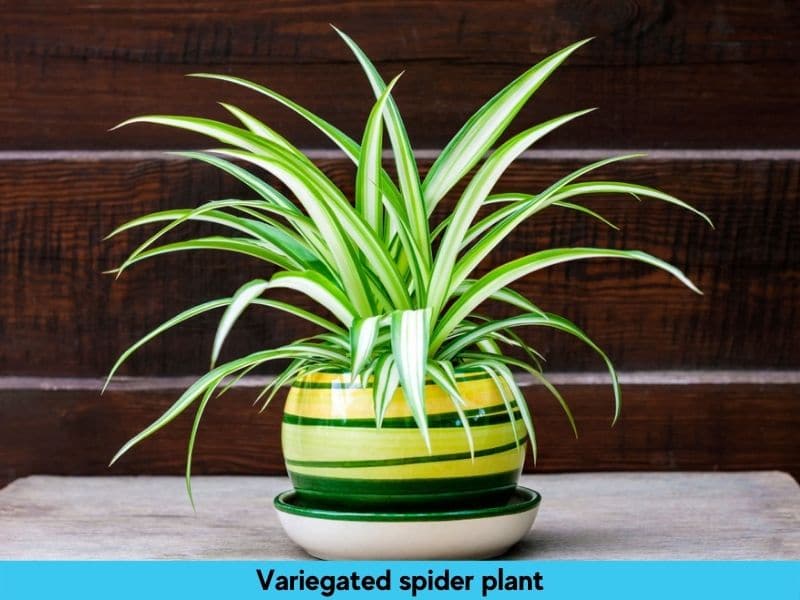
The most common, evergreen, perennial spider plant variety is the Chlorophytum Comosum Vittatum. The leaves of this type of spider plant are medium green, slightly curled, and have creamy and broad vertical stripes. It can reach a length and width of 1-2 feet.
Grow this lovely drought-tolerant hanging plant in light shade and well-drained soil. If you overwater your spider plant, it can easily turn yellow and droop.
2. Reverse spider plant
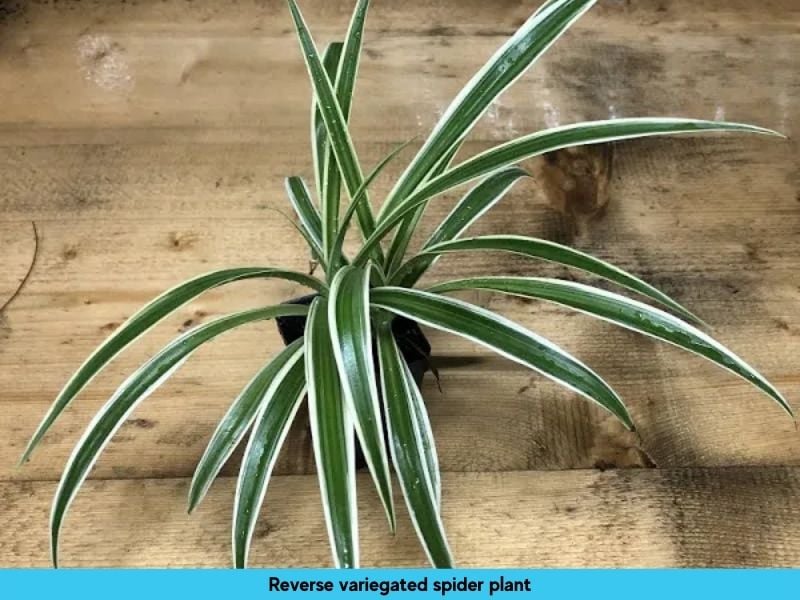
The reverse spider plant is also called Chlorophytum Comosum ‘Reverse Variegatum.’ Like the plant name hints, the outline and center of the leaves are the polar opposite of the variegated ones. The leaves have a soft yellow edge with a forest green center. This sort of spider plant is an effective way to add variety to your garden, and it can get very large. This is the main reason why they are common with gardeners.
3. Zebra spider plant (Chlorophytum laxum)
The zebra plant is more like the reverse variegatum except its leaves’ outline is much brighter. This spider plant does not grow as tall as the other species. It grows wider instead.
Just so you know, it might be quite challenging to get this variety in any of the nurseries around. You might need to check on the internet where to find one. It’s unique hence its scarcity.
4. Bonnie spider plant (Chlorophytum comosum)
Fourth on our list is the bonnie plant, which unfolds curled leaves and offspring. Its curly leaves create a resemblance to the bonnie spider plant and the variegated spider plant.
The bonnie spider plant can be significantly costly for its long, curled, brighter leaves. Most people find it suitable for smaller rooms and compact balconies.
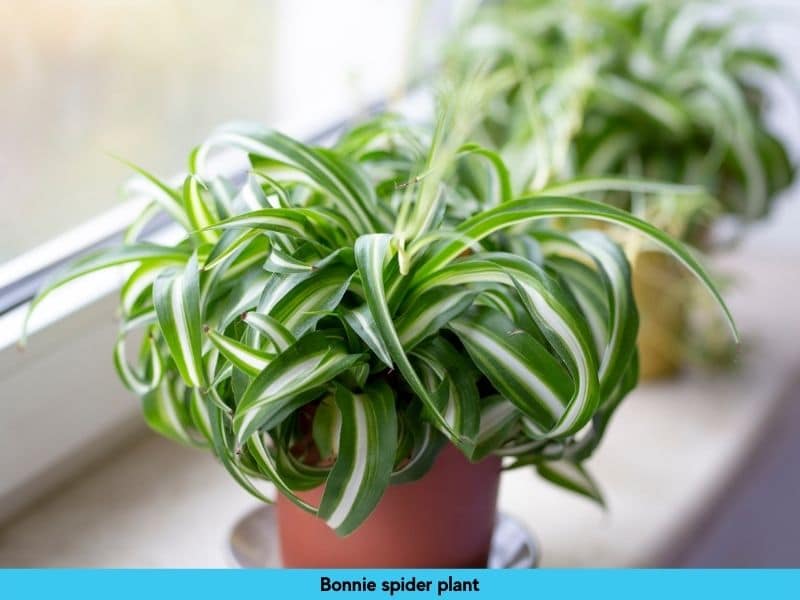
The amazing part of it all is the beautiful yellow-colored flowers. They make your space look so good. Note that this type is harder to find than other typical spider plant varieties. However, people have adopted cuttings to manage its scarcity.
5. Hawaiian spider plant (Chlorophytum viridescens ‘Hawaiian’)
Also known as the Golden Glow, the Hawaiian Spider plant is fascinating and will give your room color with its glossy green leaves. This variety is small-sized and will not cover up much of your space.
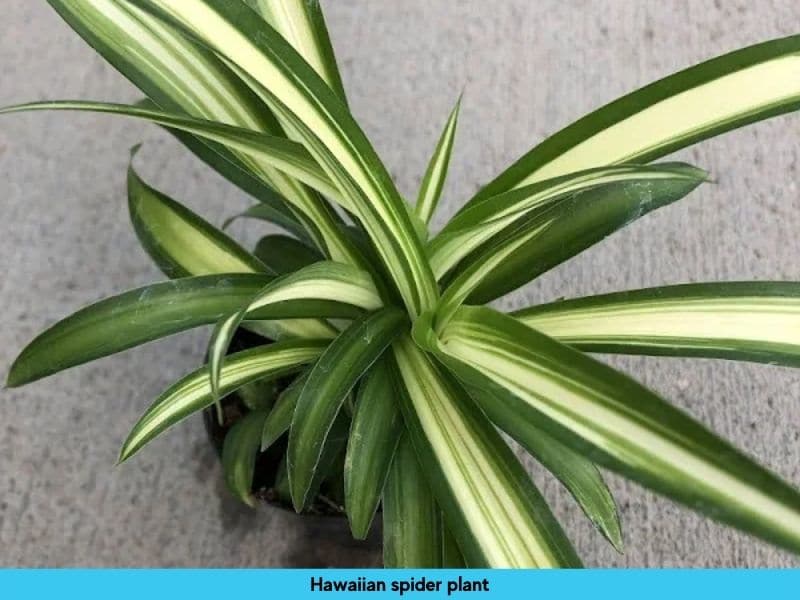
The Hawaiian spider plant grows well in moist, well-drained soil and under partial shade. However, it needs adequate lighting. You need to grow it at a pace where it can grow up to a length of 6-12 inches.
6. Chlorophytum capense
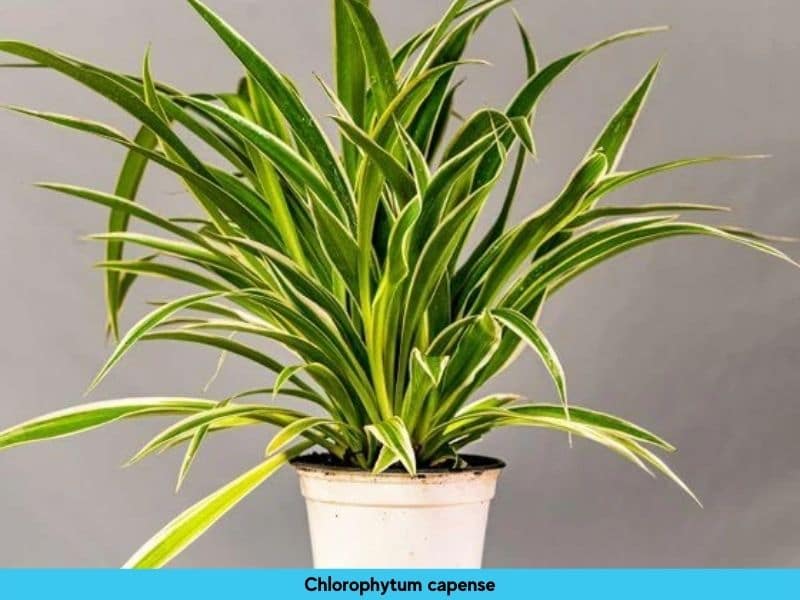
Also known as the bracket plant, chlorophytum capense is another species in the spider plant family. This species is unique because it doesn’t produce hanging offspring and has solid green leaves with a white edge.
The flowers might come out similar to those of the other species. However, with the Chlorophytum Capense, the flowers sprout straight up instead of hanging.
7. Chlorophytum Bichetii
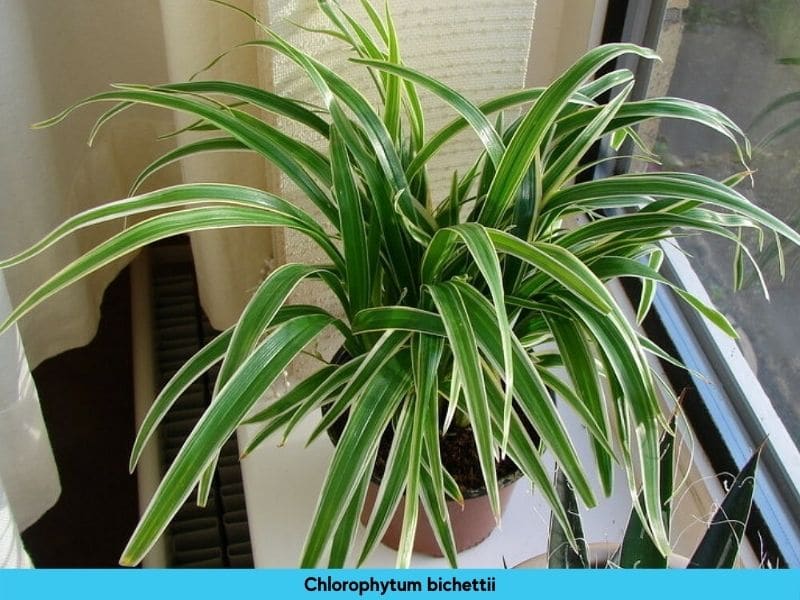
Chlorophytum Bichetii is a non-flowering chlorophytum species. These do not have any spiderette off-shoots. This makes it ideal for ground covering rather than just being used as a hanging plant. This type has the same care needs, just like the rest.
READ MORE: Why is My Spider Plant Turning Yellow?
Overview of the Spider Plant
Wondering why these plants go with the name spider? Well, its “pups” resemble the body of a spider hence the name spider plants. These plants produce white flowers off their stems.
The unique fact about these amazing plants is that their flowers blossom in the summer. When other plants are shedding their leaves and flowers, the spider plants take over space and maintain that greenery environment in your home.
Before these spider plants moved into our homes in the 19th century, they were initially ground covers in the tropical rainforest. They originated from South Africa and later spread out to the world.
Best known for their amazing leaves, spider plants help improve the air quality in your house. The name sounds scary to some people, but these plants are incredibly stress-free.
Spider plants typically adjust to any climate and give your house the feel of an aesthetic plantscape.
Remember, these plants can be quite selective with their care but need little attention. They can survive in both bright and dim lighting. In general, spider plants should be grown in hanging baskets since their long leaves prefer to arch over the edge, and bring young plantlets with them.


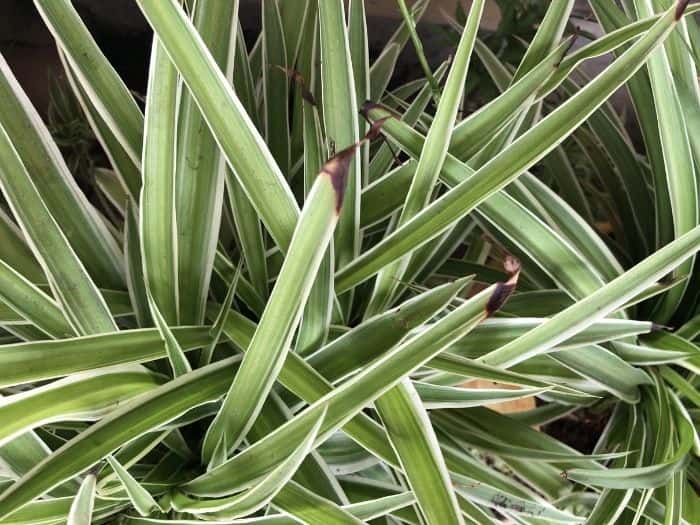
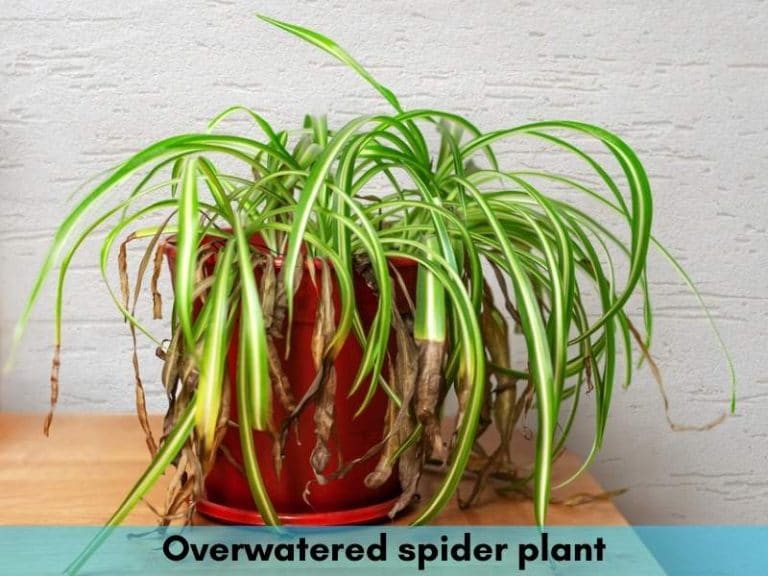
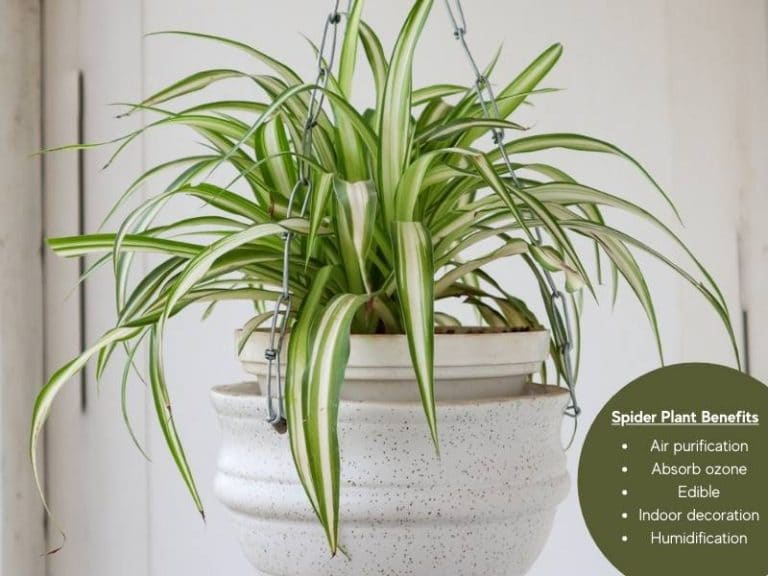
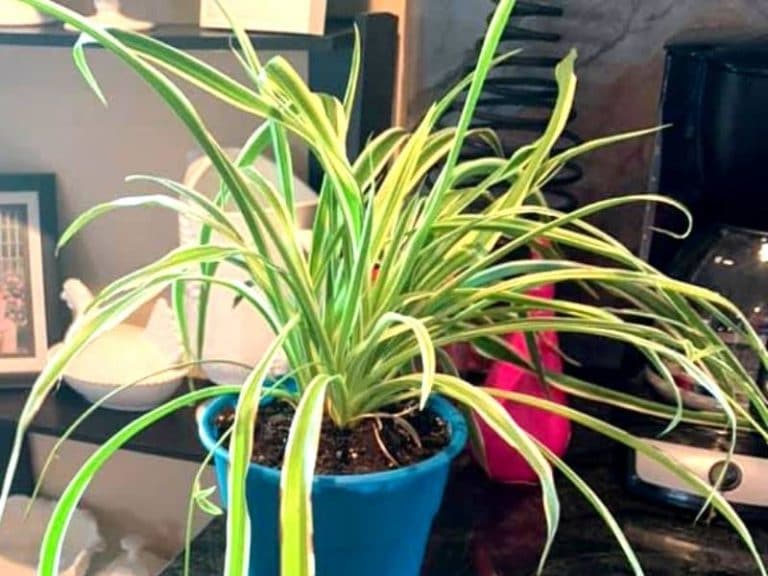
Thanks. You answered all the questions that I needed to know about spider plant varieties. Great article.
I have had spider plants off and on for decades. However, I purchased one today which was quite different. It looks more in a clump and the leaves are short and stubby and oh so compact. Is there anything different I need to know regarding light, type of soil and amendments, watering, etc?
Hi Adeline, there’s no difference in care routine for the variety of spider plant you have. I would, however, recommend growing your variety in a hanging planter to accommodate its growth pattern.
Happy growing!